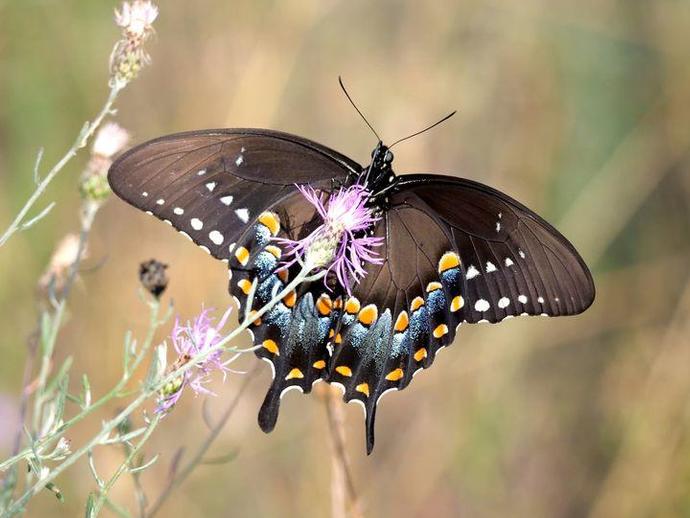August 20, 2021
It's time for the Friday edition of #BenInNature presented by our friends at Carter Bank & Trust!
Let's close out the week with one of my favorite butterflies: Papilio troilus, the spicebush swallowtail!
While this butterfly looks superficially similar to the common black morph of the eastern tiger swallowtail (our state insect here in Virginia) there are some coloration differences which can mostly be spotted on the underside of the wings. As the name suggests, the caterpillars of these butterflies mostly feed on spicebush (genus Lindera), although they're also fond of white sassafras (Sassafras albidum). The adults, meanwhile, feed on nectar from a wide variety of flowers.
One of the coolest features of the spicebush swallowtail is the mimicry that the caterpillars practice in order to avoid predators. When they're very small, the caterpillars are brown and resemble bird droppings. As they grow larger, however, they turn green and develop large eyespots behind their heads, making them resemble green snakes! These caterpillars also have an osmeterium, which is a special defense organ that all swallowtail caterpillars possess. The osmeterium is concealed within the caterpillar's body right behind the head, but it can be everted (turned outward) if the caterpillar is threatened. In the case of spicebush swallowtails, the osmeterium is red and Y-shaped, so that when the caterpillar everts it, it resembles a snake's forked tongue!
When it comes to defenses against predators, the adult butterflies are no slouches either. They mimic the related pipevine swallowtail (Battus philenor), which is toxic and foul-tasting.
Spicebush swallowtails are found in the eastern half of the U.S. If you'd like to spot one yourself, they are often found in deciduous forests and woodland swamps, and they commonly fly much lower to the ground than other swallowtail butterflies. Happy hunting!
ABOUT #BenInNature
Social distancing can be difficult, but it presents a great opportunity to become reacquainted with nature. In this series of posts, Administrator of Science Ben Williams ventures outdoors to record a snapshot of the unique sights that can be found in the natural world. New updates are posted Monday - Friday, with previous posts highlighted on the weekends. This series of posts is made possible thanks to the support of VMNH Corporate Partner Carter Bank & Trust (www.cbtcares.com).
NATURE PHOTO IDENTIFICATIONS
If you discover something in nature that you would like help identifying, be sure to message us right here on Facebook with a picture (please include location and date of picture) and we'll have our experts help you identify it!

 Hours & Admissions
Hours & Admissions Directions
Directions

